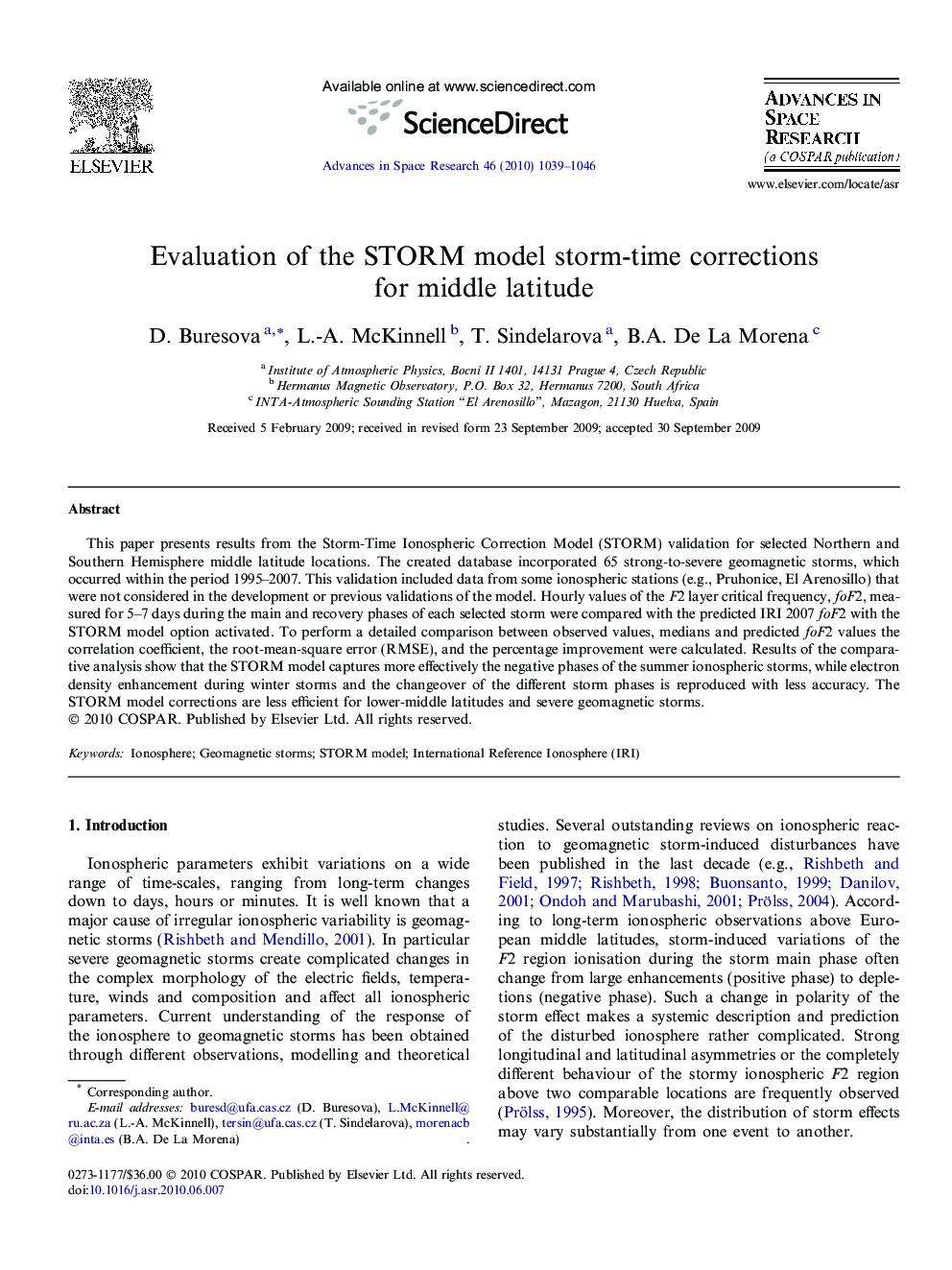| Article ID | Journal | Published Year | Pages | File Type |
|---|---|---|---|---|
| 1765509 | Advances in Space Research | 2010 | 8 Pages |
Abstract
This paper presents results from the Storm-Time Ionospheric Correction Model (STORM) validation for selected Northern and Southern Hemisphere middle latitude locations. The created database incorporated 65 strong-to-severe geomagnetic storms, which occurred within the period 1995-2007. This validation included data from some ionospheric stations (e.g., Pruhonice, El Arenosillo) that were not considered in the development or previous validations of the model. Hourly values of the F2 layer critical frequency, foF2, measured for 5-7Â days during the main and recovery phases of each selected storm were compared with the predicted IRI 2007 foF2 with the STORM model option activated. To perform a detailed comparison between observed values, medians and predicted foF2 values the correlation coefficient, the root-mean-square error (RMSE), and the percentage improvement were calculated. Results of the comparative analysis show that the STORM model captures more effectively the negative phases of the summer ionospheric storms, while electron density enhancement during winter storms and the changeover of the different storm phases is reproduced with less accuracy. The STORM model corrections are less efficient for lower-middle latitudes and severe geomagnetic storms.
Related Topics
Physical Sciences and Engineering
Earth and Planetary Sciences
Space and Planetary Science
Authors
D. Buresova, L.-A. McKinnell, T. Sindelarova, B.A. De La Morena,
